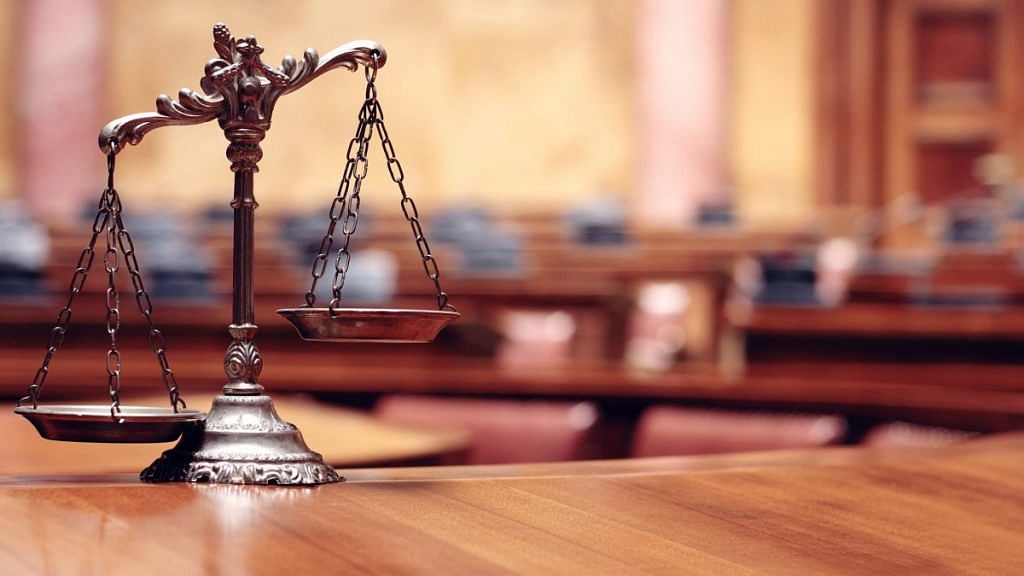All that it takes to tilt the scales in favour of justice.
Since this is my last weekly column of 2018 and since everyone is making lists for the New Year, I set out to partake in the tradition. However, mine is by no means a ‘bucket list’. At the end of what has been a tumultuous year for the Indian judiciary, I decided to list the five ways in which I think this pillar of our democracy can restore its prestige.
Healthy confrontation with Union government
The general consensus these days seems to be that the higher judiciary, especially the Supreme Court, is too well disposed towards the central government. One doesn’t want judges to rule by obiter—we know how some judges, egged on by cheering activists and motivated regulators like Vinod Rai, single-handedly destroyed one sector after another under the Congress-led UPA regime. India simply can’t afford another hit to the economy, but sometimes the wheels of the government and the powerful bureaucracy do need some tongue-lashing from our courts for things to move a bit faster.
Don’t fight, but do ensure your judgments, especially those that are aimed at mitigating the problems of the masses and upholding the rights of individuals or groups, are implemented in toto—without any unexplained delay.
Also read: Neither gag nor contempt: 2018 was the year Indian judiciary took criticism well
Don’t let politicians dictate course of action
In far too many cases, judges have allowed their actions to be influenced by politicians. So much so that on several counts, political parties have (mis)used the courts and their decisions to sway public opinion in their favour, often dragging the higher judiciary into their petty politics.
Unfortunately, the courts, including the Supreme Court, can’t escape blame for allowing their hallowed chambers to be pulled into political battles.
The Ram Temple, Rafale deal, Sabarimala and Triple Talaq cases are just some of the recent ones where politicians have involved the Supreme Court.
The judiciary, especially the Supreme Court, must ensure that its decisions are based only on jurisprudence and questions of law.
Therefore, a strict message should be given out to the politicians to keep their politics out of the courts.
Be more discriminatory while taking up PILs
Several years ago, the Supreme Court, in a landmark decision, said, “A writ petitioner who comes to the Court for relief in public interest must come not only with clean hands like any other writ petitioner but also with a clean heart, clean mind and clean objective.”
However, in recent years, headline-chasing has become the rule rather than the exception. We have lawyers and busybodies walking into courtrooms with a handful of sheets of paper masquerading as a petition—along with handy news clippings—only to waste the court’s valuable time.
So, while lakhs of under trials continue to languish in jails for want of judicial remedy due to clogged courts, our judges find the time to hear such PILs, the majority of which pertain to matters best left to the executive.
Every judge, before he or she decides to hear a PIL next year, must read the Supreme Court’s judgment in the Janata Dal vs H.S. Chowdhary And Ors. case,pronounced on 28 August, 1992, especially this part: “It is thus clear that only a person acting bona fide and having sufficient interest in the proceeding of PIL will alone have as locus standi and can approach the Court to wipe out the tears of the poor and needy, suffering from violation of their fundamental rights, but not a person for personal gain or private profit or political motive or any oblique consideration. Similarly, a vexatious petition under the colour of PIL, brought before the Court for vindicating any personal grievance, deserves rejection at the threshold.”
They must also read the guidelines issued by the top court in its judgment in State of Uttaranchal versus Balwant Singh Chaufal case, which shed light on how to “preserve the purity and sanctity of the PIL.”
Finally, the judges must re-read the compilation of guidelines, as framed by the Supreme Court, which must be followed before accepting PILs.
Also read: With 3 pillars of democracy falling apart, it’s time to read the Constitution once again
Ensure our courts reflect our diversity
Here is something to chew on: there are currently just three women judges out of a strength of 26 in our top court. Among them, there is just one Muslim, one Christian and no Sikh. What should be more worrisome is the fact that there is no representation of Scheduled Castes or Scheduled Tribes in our highest judiciary. Several states, too, are not represented in the Supreme Court.
These figures aren’t something to be proud of.
The situation in the high courts and the subordinate judiciary is no better. It is imperative that our highest judiciary refrains from playing up uncle-judges as it were and nurtures talented youngsters, especially those who have come up the hard way, particularly those from the deprived classes and women and minorities so as to tilt the scales in favour of justice, just a bit more.
Also read: Apart from Ram, the Supreme Court is BJP’s best friend in 2019
Frame better judgments
Last but not the least, I wish our judges start writing judgments that are well-argued and reflect some workmanship. Merely summarising the arguments of the counsel and giving the court’s view, without making clear the basis on which it reached a conclusion, does no justice to the calibre of our judges.
The length of the judgment doesn’t matter. What matters is its core—and how the court hopes to have it implemented.
